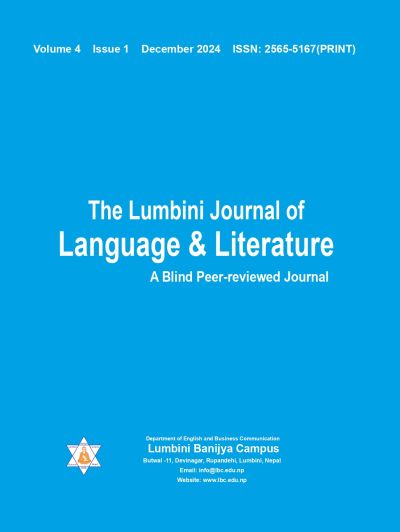Aesthetic Voice of Versified English Poetry in Nepal
DOI:
https://doi.org/10.3126/ljll.v4i1.73886Keywords:
Aesthetics, hermeneutic phenomenology, recitation, prosody, feet, meterAbstract
The present study posits the teachers’ perspectives and experiences in teaching English poetry in Nepal. It aims to reveal the complexities that EFL teachers face when teaching English poetry. Poetry consists of arcane lexicons due to constraints on metrical patterns. To fit into these patterns and create rhythmicity in the lines, verse composers apply pliable meters, which make poetry pedagogy a challenge in the EFL context in Nepal. Based on an interpretive research paradigm, this study used the hermeneutic phenomenological method to conduct fieldwork and data analysis. Seventeen English language teachers were purposively selected from government and private schools in the Rupandehi district of Nepal. In this study, in-depth interviews were used as data collection tools to explore the perspectives and experiences of teachers who taught English poetry as a foreign language. The study disclosed significant challenges regarding the aesthetics of language used in poetry and English versified poetry recitation in the context of Nepal, owing to linguistic, pedagogical, and cultural aspects. These challenges created problems for the appreciation of this literary genre and the effective pedagogy of poetry. This study highlighted the necessity of curriculum revision to provide teachers with sufficient information about poetic elements such as feet, meter, rhyme, rhythm, caesura, and tempo. Similarly, it emphasized the need for a deeper understanding of poetic forms and recitation art to address the challenges of applying innovative teaching techniques such as the Poetry Box Method.
Downloads
Downloads
Published
How to Cite
Issue
Section
License
The copyright for articles published in journal are retained by the authors with first publications right granted to the journal.




